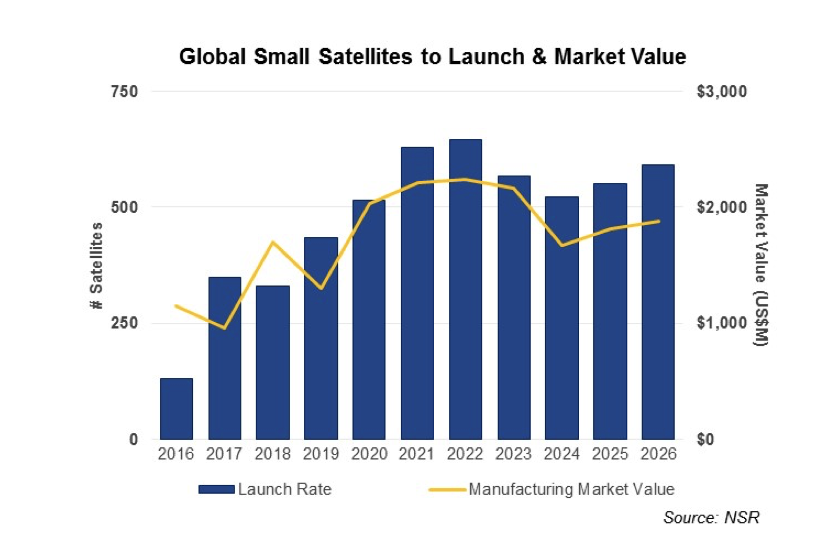|
Meaningful Smallsat M&A
Jan 16th, 2018 by
Carolyn Belle, NSR
The smallsat manufacturing and components market has developed somewhat
haphazardly – a combination of post-university projects, commercial
start-ups, and established companies growing into the smallsat business –
producing a multitude of players in an increasingly competitive market. M&A
is the natural consequence for this young market as it matures and companies
seek to consolidate market share. Recent deals provide an understanding of
what players are hoping to accomplish by aligning their interests, and what
this might mean for the smallsat industry at large.
-
In December 2017,
ÅAC Microtec acquired Clyde Space
in a deal that will see Clyde Space owners take a 49% stake in the new
entity. This end of year deal, coming mere months after Clyde CEO Craig
Clark noted efforts to raise additional funding for expansion that
included an openness to acquisition, unites two subsystem and end-to-end
manufacturers. The combined company has a
broader portfolio and enhanced ability to
pursue new opportunities,
building on their mutual experience, resources, and distribution
networks.
-
General Atomics acquired the U.S. assets of
Surrey Satellite Technology
in November 2017, following the latter’s decision to close its U.S.
subsidiary. With only limited cubesat experience, this move
provided GA with a means into the broader
smallsat manufacturing market
without investing the time and effort to build capabilities from the
ground up. GA will be able to leverage the SST-US facility and trained
personnel alongside its own strong position as an incumbent defense
contractor to compete for ~1-500 kg projects.
-
Late 2016 saw end-to-end manufacturer
GomSpace
acquire NanoSpace,
a propulsion subsystem provider. This step towards
vertical integration controls costs and
brings an increasingly sought-after capability under GomSpace’s control,
providing a competitive edge not only in general demand, but
particularly for upcoming constellation RFPs likely to require advanced
maneuvering capabilities.
-
While more partnerships than formal M&A,
the mid-2017 agreements between
Lockheed Martin & Terran Orbital
and
The Space Alliance (Thales Alenia
Space/Telespazio) & Spaceflight Industries
highlight the growing interest of traditional prime manufacturers in the
smallsat sector. Both plays
enable established primes to expand their
know-how in the budding
smallsat market without requiring significant internal R&D, while
allowing the younger partners to benefit from their deep pockets and
expertise. Such arrangements also open opportunities for cross-marketing
and unique proposals that leverage the niche skills of each partner.
While instances of such M&A and partnership
activity are limited considering the vast number of component and platform
manufacturers active in the smallsat industry, its
importance within the lens of expanding demand
for smallsats is meaningful.
NSR’s
Small Satellite Markets, 4th
Edition, found the
annual launch rate will approach 600 satellites by 2026, a more than
four-fold increase over 2016.

This level of activity will generate a total $17
billion in manufacturing revenue. As the market will progress towards fewer,
bigger contracts alongside consolidation within the operator space,
each win is high stakes for manufacturers.
The Bottom Line
The smallsat manufacturing market is in the early
stages of what will be an increasingly active M&A period as competition
heightens.
The consolidated manufacturing landscape that
results should be beneficial to smallsat operators,
as each combined entity will have a
broader portfolio of solutions
and the enhanced engineering team to solve complex requirements. In this
environment smallsat manufacturers and component providers must be
aggressive in securing market share – or otherwise leave themselves open to
acquisition, or being squeezed out of the market altogether.
|







